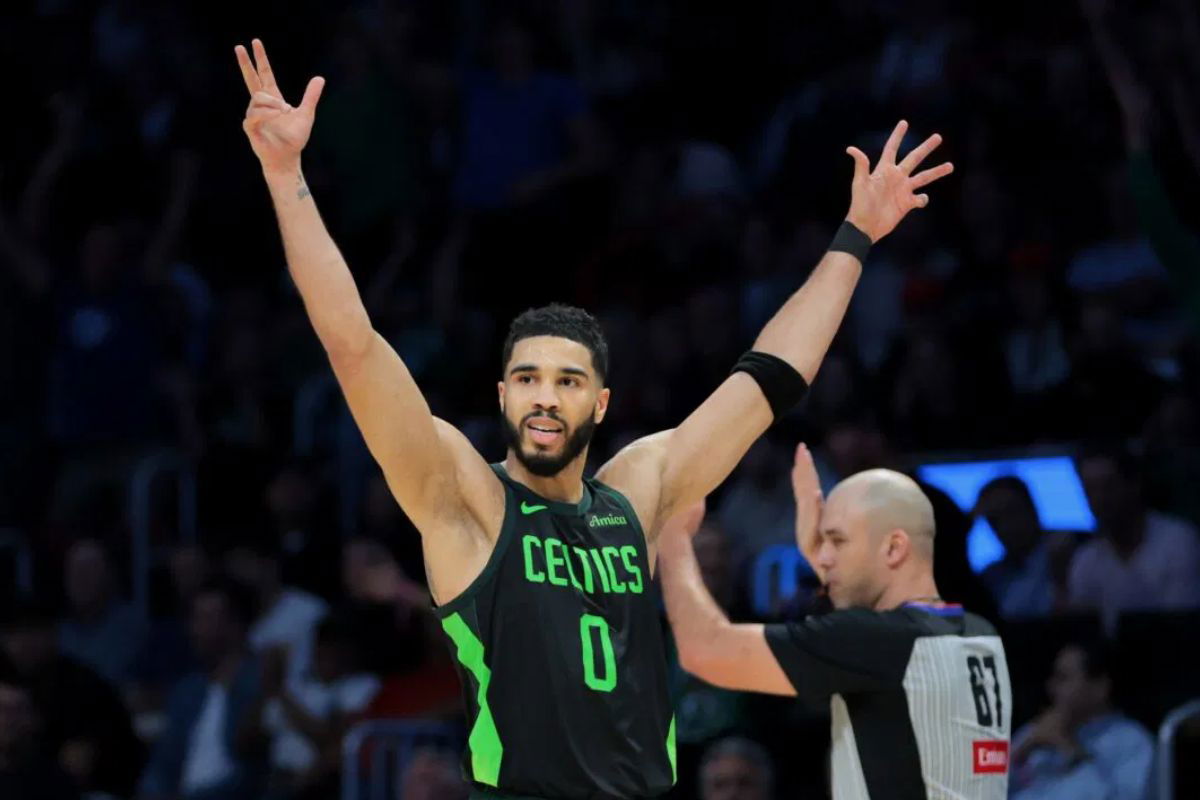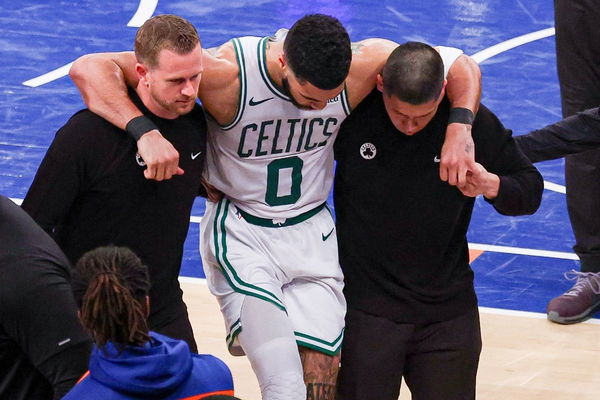
Imago
Image Credits – IMAGN

Imago
Image Credits – IMAGN
It was supposed to be Jayson Tatum’s defining playoff moment. In Game 4 of the Eastern Conference Semifinals, with a chance to tie the series up at 2-2, the Celtics’ superstar poured in 42 points before disaster struck. A torn Achilles left him down on the floor, and Boston’s title defense was shattered. The injury didn’t just end his postseason; it cast a shadow of uncertainty over his future.
Watch What’s Trending Now!
Renowned specialist Dr. Martin O’Malley immediately operated on the rupture in early May. For NBA players, the dreaded Achilles rupture is one of the most devastating setbacks, altering careers permanently and even causing early endings in the worst cases. That history now had all eyes on how Tatum’s rehab would unfold, and whether Boston’s cornerstone piece could somehow beat the odds.
Interestingly, medical experts see a change in the landscape. Orthopedic surgeon Dr. Kevin R. Stone explained, as shared by Celtics beat reporter Bobby Krivitsky on X, “We’ve learned over the last few years that very early motion and rehabilitation accelerate the healing… It doesn’t damage the repair.” He added that new methods in surgery have allowed athletes to start moving almost immediately instead of having to slowly ramp up from complete immobilization.
ADVERTISEMENT
Krivitsky added that Arthrex, “the company behind the SpeedBridge procedure, told me that the PARS Achilles Midsubstance SpeedBridge™ [PARS AMSS] allows for immediate partial weight-bearing,” and that patients are progressing to sports-specific training in around four months.
Tatum himself made an appearance on First Take recently, where he announced a new partnership. As part of the announcement, he shared his personal experience with recovery, explaining how the company’s non-opioid pain medication helped him manage his rehabilitation.
He said, “I think obviously a big reason why I’m here is to announce my partnership with Vertex Pharmaceuticals. There was a period of four weeks where, you know, you introduce 50% weight bearing, and I’m on crutches. So I have surgery and I haven’t put any weight on this side for a month.” His doctor warned him about the pain he had ahead of him, and that made a careful approach to pain management a requirement.
ADVERTISEMENT
While discussing advancements in treating a torn Achilles, a leading expert in the field, @kstonemd, told me:
“We’ve learned over the last few years that very early motion and rehabilitation accelerate the healing…It doesn’t damage the repair.”@Arthrex, the company behind… https://t.co/8ajDYKepTK
— Bobby Krivitsky (@BobbyKrivitsky) September 23, 2025
The Celtics star revealed that he was given JOURNAVX, a non-opioid for moderate to severe acute pain. Tatum noted, “It relieved the pain, and it gave me a clear mind going into rehab at that moment.” The clarity was critical in helping him “attack whatever I was trying to do” during his rehab, including mobility drills and strength exercises.
ADVERTISEMENT
For someone who hopes to be back sooner than later, the question is now whether he will be the same or perhaps even greater.
The PARS AMSS advantage on Tatum’s side
Jayson Tatum’s Achilles recovery is benefiting significantly from state-of-the-art surgical techniques and rehab protocols that weren’t available to past NBA stars. The PARS AMSS procedure focuses on reinforcing the tendon through a double-row anchor system, which provides stability and helps improve strength. This lets recovering athletes go ahead with some early motion and partial weight-bearing, like boots with wedges. In the new systems, transitions to functional loading and improved motion, as well as walking, can be done in six to 12 weeks.
ADVERTISEMENT

Imago
Image Credits: IMAGN
Following his surgery this summer, Tatum has begun a cautious recovery period. In July and August, he had progressed to begin mobility exercises and pool work, and observers eventually noted that he was participating in team drills without a boot, showing that his strength and stability were returning. While there is no firm date set for his return, Tatum has emphasized that a patient recovery remains his main priority and that he is working six days a week on conditioning to ensure a proper comeback.
Historical Achilles recoveries in the NBA show us the importance of the approach Tatum has taken. Multiple stars, including Kevin Durant, Kobe Bryant, and Klay Thompson, have faced long-term roadblocks. All of them suffered varying degrees of decline in athletic ability following this, with both Kobe and Klay witnessing a major change and adjustment in their roles. With Jayson Tatum having the advantage of the advancement in medical technology on his side, there’s optimism that he can reach high-level competition sooner and safer than his predecessors.
ADVERTISEMENT
ADVERTISEMENT
ADVERTISEMENT
ADVERTISEMENT

